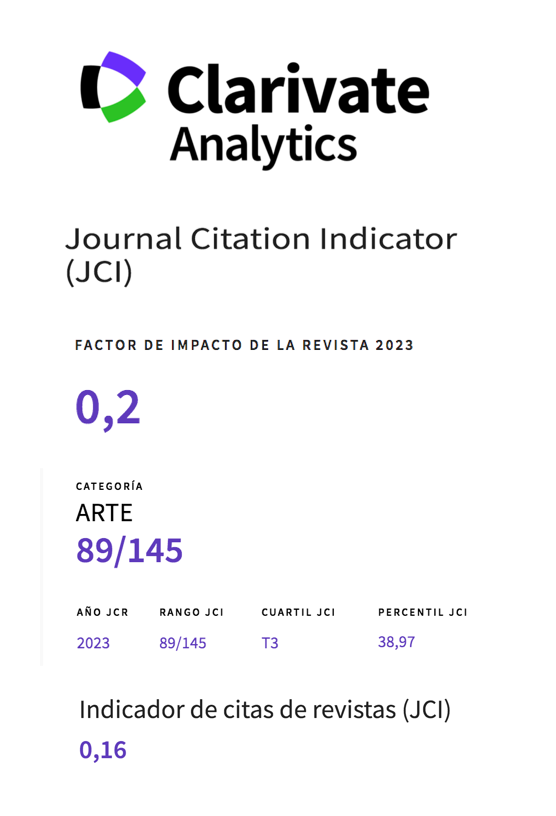Augmented Reality Inside Videogames.
Resumen
El nuevo entorno de los medios de comunicación aporta datos digitales a la vida real mediante tecnologías de realidad aumentada, lo que proporciona a los usuarios una nueva visión en la que el mundo binario interactúa directamente con el real. Una nueva era está llegando: con desafíos, con dudas y principalmente con ideas nuevas que empiezan a tomar forma. Una de ellas es si la teoría de McLuhan de un medio integrando a otro sigue siendo un paradigma viable, como vemos en los elementos de realidad aumentada que aparecen dentro de los videojuegos. Este artículo está compuesto de un análisis de la tercera etapa de la web y esta se expande con la realidad aumentada; los orígenes y los conceptos de diseño de interfaz y como el entretenimiento puede ser un entorno de pruebas para las nuevas ideas. Sigue un capítulo sobre el ambiente eléctrico de los medios híbridos, las categorías de aumentación y las teorías de Rancière sobre el espectador emancipado.El tema culmina en un análisis de la realidad aumentada en el interior de VR-juegos, donde se hace un análisis de videojuegos y es seguido por un comentario sobre los cuatro mejores dispositivos. Todos los datos recogidos nos proporcionaron el marco de trabajo para analizar la teoría de McLuhan sobre cómo podría ser el futuro de las tecnologías virtuales cuando se trata de producciones virtuales dentro de otros medios virtuales.
Descargas
-
Resumen193
-
PDF259
Citas
Aliens (James Cameron, 1986) [movie]
Dennis, E. E., DeFleur, M. (2010). Understanding media in the digital age. US: Pearson.
District 9 (Neill Blomkamp, 2009) [movie]
Doom 3 (ID Software, Activision, 2004, PC) [videogame]
Edge (2013). “Leap Motion brings 3D motion control to the desktop, with mixed results”, 12 September 2013. London, UK: Future Publishing. Available in www.edge-online.com/features/leap-motion-brings-3d-motion-control-to-the-desktop-with-mixed-results/ (Access in November 2013).
Edge (2013b). “Believe the hype”, nº 254, June. London, UK: Future Publishing (75-81).
Elias, H. (2013). Post-Web: The continuous geography of digital media. Odivelas, Portugal: FormalPress. Available in: www.amazon.com. (Access in November 2013).
Elias, H. (2009). First person shooter - the subjective cyberspace. Covilhã: LabCom, UBI. Available in www.livroslabcom.ubi.pt/pdfs/20110818-elias_first_maio_2009.pdf (Access in November 2013).
Furht., B. (2011). Handbook of augmented reality. New York, NY:Springe r.
Gibson, W. (2012). Distrust that particular flavour. New York, NY: G. Putnam & Sons.
Glass (Google, 2014) [hardware]
Google (2012). The new multi-screen world: understanding cross-platform consumer behavior, August 2012. US: Google Think Insights, Sterling Brands, Ipsos. Available in www.google.com/think/research-studies/the-new-multi-screen-world-study.html(Access in November 2013).
Google Maps (Google, 2013) [appware]
Google Now (Google, 2013) [appware]
Heavy Rain (Quantic Dream, SCEA,2010, PS3) [videogame]
Huybrechts, F. (2011). Mobile brand strategy. Why aim mobile investments towards a 3.0 future? Made by: The Mobile Relevance Project. November, 2011. Available in: www.MobileRelevanceProject.com (Access in August 2013).
Ironman (Jon Favreau, 2008) [movie]
Kinect (Microsoft, Xbox One, 2013) [hardware]
Leap (Leap motion, PC, 2013) [hardware]
Lipovetsky, G. & Serroy, J. (2007). L’écran global. Culture-médias et cinéma àml’âge hypermoderne. Paris: Seuil.
Lisberger, S. & Daley, B. (1982). Tron. Odivelas, Portugal: Europress.
Manovich, L.(2001). The language of new media. Cambridge, Massachusets, MA: MIT Press.
McLuhan, M. (1994). Understanding media: The extensions of man [1964]. Massachusetts, MA: MIT Press.
Minority Report (Steven Spielberg, 2002) [movie]
Neale, Mark (2000). William gibson - no maps for these territories. US: Neale.
Nilsson, S. (2007). Interaction without gesture or speech – a gaze controlled AR system. Los Alamitos, California, US: IEEE Computer Society Press.Available in: http://citeseerx.ist.psu.edu/viewdoc/download?doi=10.1.1.127.9994&rep=rep1&type=pdf (Access in November 2013).
Oculus Rift (Oculus VR, PC, 2014) [hardware]
Pajot, L., Swirsky, J. (2012). Indie game: the movie.US: Gowdy Manor. Available in: http://buy.indiegamethemovie.com/ (Access in November 2013).
PC Gamer (2013). “This is the future of PC games”, nº259, August. London, UK: Future Publishing (40-47).
Postman, N. (1994). Tecnopolia - quando a cultura se rende à tecnologia [1992]. Lisbon, Portugal: Difusão Cultural.
Works published in this journal are subject to the following terms:
- The Service of Publications from the University of Murcia (publishing house) keeps the published works’ copyrights, and favors and allows the reuse of these works under the license indicated in point 2.
- Works are published in the journal’s online edition under the license Creative Commons Reconocimiento-NoComercial-SinObraDerivada 3.0 España(texto legal). They can be copied, used, disseminated, transmitted and publicly exhibited, as long as: i) the author and original source of publication are cited (journal, publishing house and work’s URL); ii) they are not used for commercial purposes; iii) the existence and specifications of this license are mentioned.
3. Conditions for auto-file. It is allowed and encouraged that authors share electronically their pre-print version (the pre-reviewed version) and /or post-print version (the reviewed and accepted version) of their Works before the publication, since it promotes its circulation and dissemination. RoMEO color: green.









